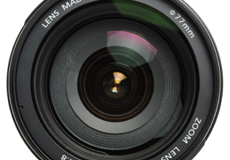By
Debra KaufmanApril 14, 2020
Apple just submitted an application to the U.S. Patent and Trademark Office for a light field panoramic camera system for next-generation iPhones, iPads and head-mounted displays (HMD). With the camera, the user will be able to capture images (as well as position and orientation information) by holding up the device. Processing the images for relative positions and depth information, the light field panorama will allow a viewer to explore 3D views of the image with 6 degrees of freedom (DOF). Continue reading Apple Files Patent for Light Field Camera System with 6DOF
By
Debra KaufmanApril 20, 2017
Startup Light Field Labs, founded by three former Lytro engineers, is working on creating holographic displays via light field technology. The goal is to create a TV set that can project a 3D hologram into the living room, with the further-off goal of enabling the user to touch it. Although that might sound like science fiction, the company founders stand behind their idea, and state the company will be able to ship a few displays to developers in 2018. Commercial production will be in operation by 2019 or 2020. Continue reading Startup to Introduce Holographic TV Technology at NAB 2017
By
Debra KaufmanNovember 18, 2016
Sony Pictures and Nokia have partnered to produce and distribute VR content. In addition to using Nokia’s OZO VR camera to produce videos, Sony will use the OZO’s Live VR broadcast feature to live stream 360-degree video of Sony Pictures events for fans. Sony will also add Nokia’s SDK to its Privilege Plus app, which is only available on Sony mobile phones. Nokia debuted the OZO a little over a year ago for about $60,000; the cost goes up with additional gear required to produce VR films. Continue reading Sony Pictures, Nokia Partner to Create, Distribute VR Content
By
Debra KaufmanSeptember 1, 2016
Up until now, virtual reality content from The New York Times, the United Nations, Facebook, YouTube and others is actually more accurately described as 360-degree video. What that means is that, although it is immersive, the viewer can’t move inside the VR experience, limited to three “degrees of freedom” (3DOF). In computer-generated videogames, the player has six degrees of freedom (6DOF), and Lytro has advanced its plans to bring that to cinematic virtual reality with its light field camera system. Continue reading Lytro Debuts First VR Film Shot with Immerge Camera System
By
Debra KaufmanJuly 25, 2016
Numerous companies are introducing virtual reality cameras, filling a void that existed a year ago when VR productions were limited to the low-resolution Ricoh camera or custom rigs with multiple GoPro cameras. Among those manufacturers now offering 360-degree cameras are Samsung and LG aiming at the consumer marketplace, and Nokia, Jaunt and Lytro positioned towards the professional market. Kickstarter campaigns are also underway for additional cameras. The latest venture comes from CNET founder Halsey Minor, who is building an end-to-end immersive video system. Continue reading Halsey Minor Seeks to Disrupt VR Production with Live Planet
By
Debra KaufmanJanuary 25, 2016
At the Sundance Film Festival, the latest in virtual reality appears at the New Frontier, the Sundance Institute’s showcase for virtual reality, immersive cinematic works, and media lab innovations. 2016 is no exception, and the buzz is already out about some of the must-see virtual reality movies and experiences. Among them, “The Wasteland” from 8i is one recommendation. Other notable VR experiences at Sundance include “American Bison,” “Kiya” and “Wave of Grace.” Continue reading Must-See VR at Sundance: Volumetric Capture, Empathic Tales
Startup CENTR Camera, comprised of former Apple employees part of the iPhone camera team, has created a camera that allows users to capture everything happening around them simultaneously. The camera combines smartphone hardware and imaging software. The circular shaped camera combines footage captured by four 5-megapixel cameras into one 360-degree panoramic video. The device can easily fit in a user’s hand, weighs about the same as a first generation iPod, and will cost $399. Continue reading CENTR Camera Records Everything Around You All at Once
By
emeadowsMarch 12, 2013
Among the most talked-about things at this year’s South by Southwest conference are a camera that automatically takes photos every 30 seconds, a new gaming console and a gadget that allows people to control their computers and other devices by waving their hands. It is estimated that at least two-dozen panels, talks and presentations at this year’s SXSW involve a new device or gadget. Continue reading Hardware, Gadgets Outpacing Software at SXSW this Year
By
Don LevyJanuary 9, 2013
Notable guests convened for a panel discussion on the state of innovation, called “Argue the Future 2: Return of the Future.” Moderated by Joshua Topolsky, editor-in-chief of The Verge, panelists included Walt Mossberg of the Wall Street Journal, Hulu’s Andy Forssell, Lytro founder Eric Cheng and Nilay Patel, managing editor of The Verge. The discussion addressed the role of hardware and software, and which plays a larger role in today’s tech landscape. Continue reading CES 2013: Panel Looks at Hardware, Software and Innovation



